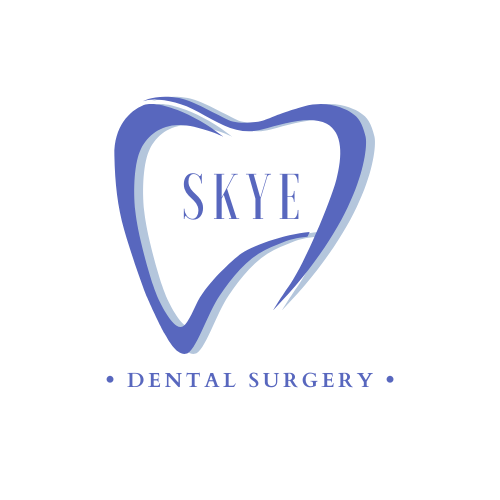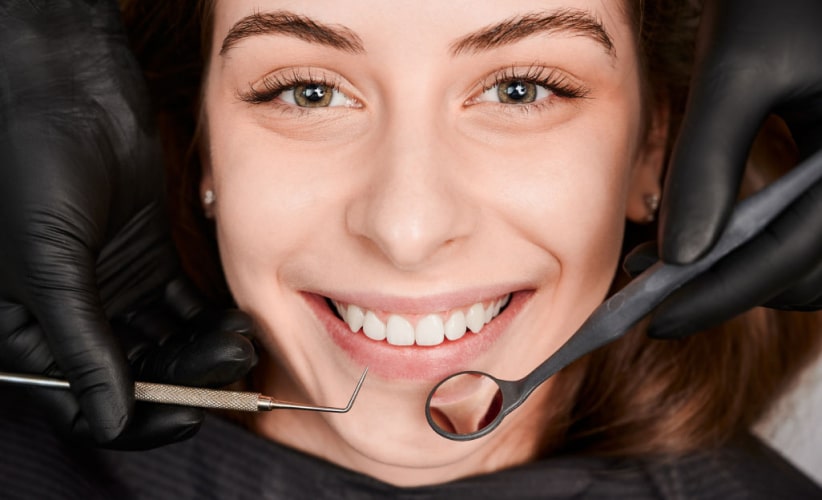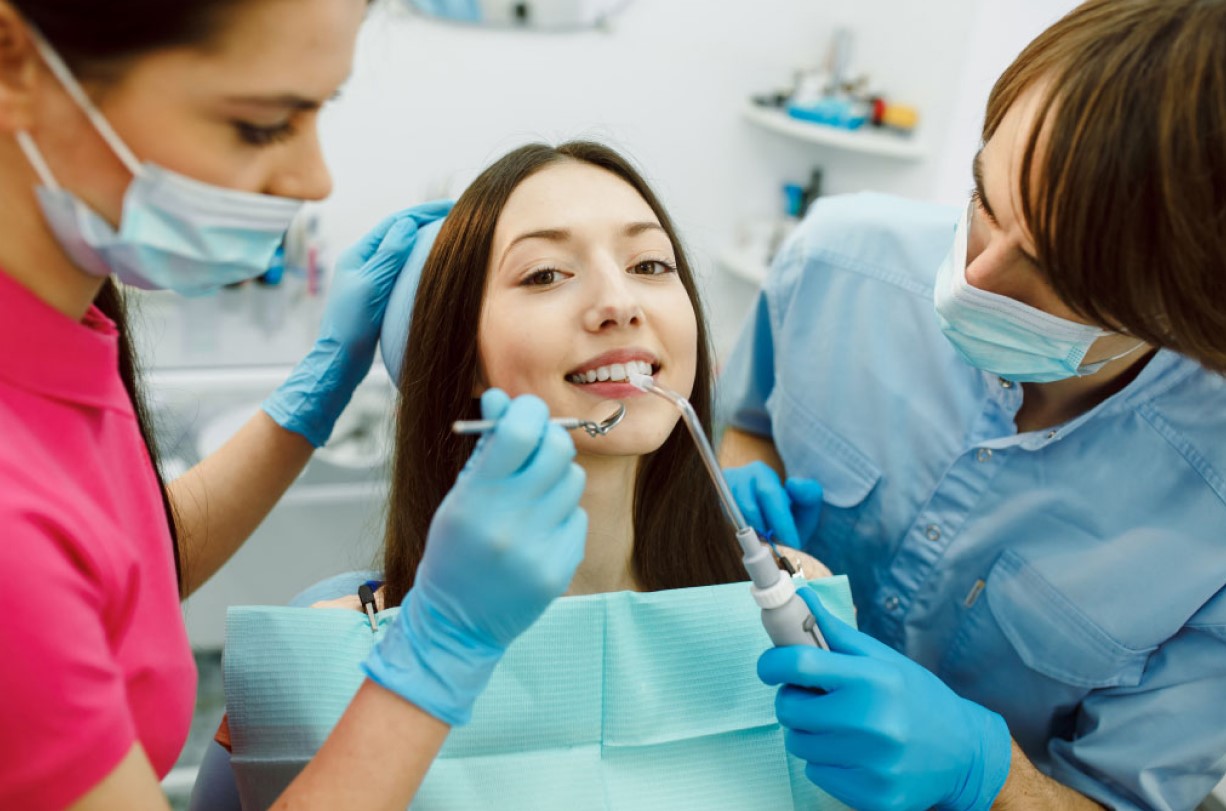
Braces treatment has come a long way, giving you more options than ever to achieve a perfect smile. Two of the most popular choices are conventional braces and self-ligating braces.
But which one is right for you?
Understanding the differences between these braces can help you make an informed decision about your orthodontic care.
In this article, we’ll provide an in-depth comparison of conventional braces and self-ligating braces, covering key aspects like mechanics, treatment duration, comfort, aesthetics, and overall effectiveness.
Mechanics and Design
Conventional Braces
Conventional braces consist of metal or ceramic brackets that are bonded to each tooth. These brackets are connected by an archwire, which applies pressure to the teeth to move them into the desired position.
Small elastic bands, called elastic ligature which is also known as o-ring, are used to hold the archwire in place within the brackets. These elastics need to be changed regularly during orthodontic appointments.
Self-Ligating Braces
Self-ligating braces, on the other hand, use a specialized bracket system that eliminates the need for o-rings. The brackets have a built-in mechanism, often a sliding door or clip, which secures the archwire.
This design allows the archwire to move more freely within the bracket, potentially reducing friction and making adjustments easier.
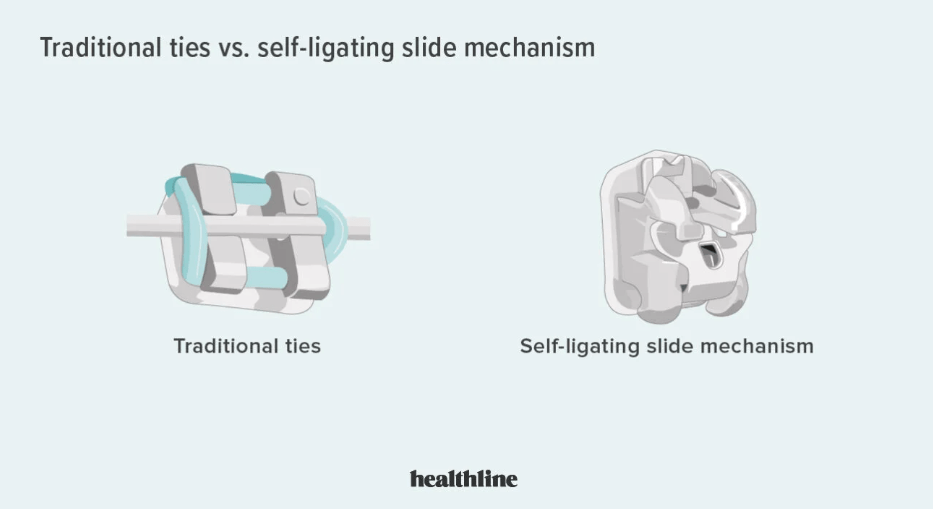
Source: Healthline
Extraction vs. Non-Extraction Cases
When it comes to creating space for tooth alignment, conventional braces and self-ligating braces can approach the problem differently.
Conventional Braces
Conventional braces often require extractions, particularly in cases where there is severe crowding. By removing certain teeth, space is created, allowing the remaining teeth to be aligned properly.
This method is well-established and effective, especially for complex cases where significant movement and space adjustment are necessary.
Self-Ligating Braces
Self-ligating braces, on the other hand, are frequently advocated for non-extraction treatment plans.
The advanced design of self-ligating brackets allows for more efficient arch expansion, which can create the necessary space for aligning teeth without the need for extractions. This can be particularly appealing to patients and orthodontists looking to avoid tooth removal.
By reducing friction and allowing smoother tooth movement, self-ligating braces can potentially address moderate crowding issues through natural arch expansion, thus preserving the patient’s natural dentition.
However, the suitability of this approach depends on the individual’s specific orthodontic needs, and not all cases can be treated without extractions.
Thinking about getting braces? Read this article to ensure a smooth and successful start to your orthodontic journey!
Treatment Duration
One of the key factors that patients consider when choosing between conventional and self-ligating braces is the duration of treatment.
Conventional Braces
The treatment duration with conventional braces can vary widely depending on the complexity of the case. On average, patients wear conventional braces for 20 to 32 months.
However, some cases may require longer treatment times, especially if significant tooth movement or jaw correction is needed.
Self-Ligating Braces
Proponents of self-ligating braces claim that the reduced friction and more efficient tooth movement can lead to shorter treatment times.
Studies and clinical experiences suggest that self-ligating braces can shorten treatment duration by a few months compared to conventional braces.
So, ready to start your journey towards a beautiful, confident smile?
Schedule a consultation with our experienced orthodontists at Skye Dental today! Explore the best braces option for your unique needs, bringing you one step closer to achieving your dream smile.

Source: Freepik
Comfort
Comfort is a significant consideration for patients undergoing orthodontic treatment, as braces are typically worn for an extended period.
Conventional Braces
The presence of elastic ligatures in conventional braces can increase friction between the archwire and brackets, potentially causing discomfort.
Additionally, the elastics can create more pressure on the teeth, leading to soreness after adjustments. Patients may also experience irritation of the inner cheeks and lips due to the brackets and wires.
Self-Ligating Braces
Self-ligating braces are often reported to be more comfortable than conventional braces.
The absence of elastic ligatures reduces friction, which can minimize discomfort and the feeling of tightness after adjustments. The design of self-ligating brackets also tends to be smoother and smaller, reducing irritation to the soft tissues of the mouth.
Want to get your braces off faster? Check out this article for more valuable insights!
Aesthetics
The appearance of braces is an important factor for many patients, particularly for adults and teens who may be concerned about the visibility of their orthodontic treatment.
Conventional Braces
Conventional braces are available in metal and ceramic options.
Metal braces are the most noticeable, while ceramic braces are less conspicuous due to their tooth-colored appearance. However, ceramic braces can still be visible, especially with the presence of elastic ligatures, which can stain over time.
Self-Ligating Braces
Self-ligating braces are available in both metal and clear options.
Clear self-ligating brackets are made from ceramic or translucent materials, making them a more aesthetic choice for patients concerned about the appearance of their braces.
Additionally, the lack of elastic ligatures reduces the risk of staining, helping the braces maintain a cleaner look throughout treatment.
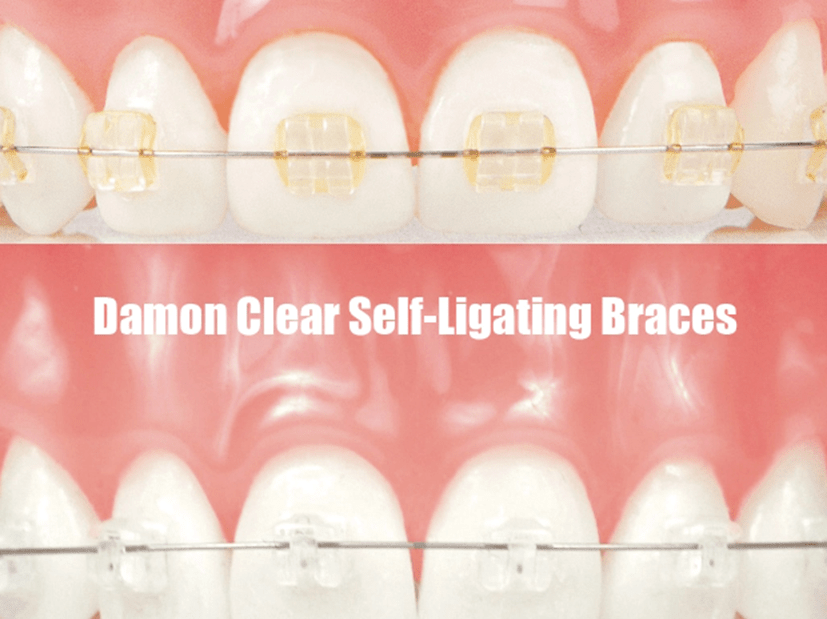
Source: Baker Street Dental
Efficiency and Effectiveness
The ultimate goal of orthodontic treatment is to achieve optimal alignment and function of the teeth and jaws. Both conventional and self-ligating braces are effective in achieving these goals, but there are some differences in how they work.
Conventional Braces
Conventional braces are highly effective for a wide range of orthodontic issues, from minor misalignments to complex malocclusions.
The use of elastic ligatures allows orthodontists to apply specific forces to individual teeth, providing precise control over tooth movement.
However, the increased friction from the ligatures can sometimes slow down the process.
Self-Ligating Braces
Self-ligating braces are designed to reduce friction and allow for more efficient tooth movement.
The sliding mechanism of the brackets enables the archwire to move freely, which can enhance the effectiveness of the treatment. Some studies suggest that self-ligating braces may be more efficient in certain cases, such as when arch expansion is needed.
However, the overall effectiveness of self-ligating braces compared to conventional braces is still a topic of debate among orthodontists.
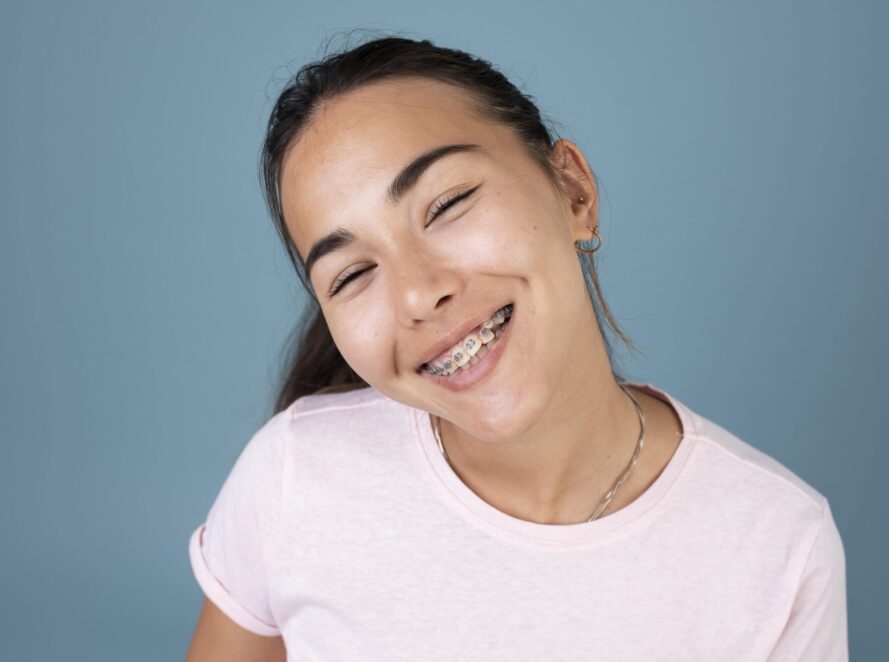
Source: Freepik
Maintenance and Oral Hygiene
Maintaining good oral hygiene is crucial during orthodontic treatment to prevent cavities, gum disease, and other dental issues.
Conventional Braces
Conventional braces require diligent oral hygiene practices.
The presence of elastic ligatures and more complex bracket designs can create additional areas for plaque and food particles to accumulate. Patients need to be thorough with brushing and flossing to ensure all surfaces are clean.
Special tools, such as interdental brushes and water flossers, can be helpful in maintaining oral hygiene with conventional braces.
Self-Ligating Braces
Self-ligating braces have fewer components, which can make them easier to clean compared to conventional braces.
The absence of elastic ligatures reduces the number of areas where food particles and plaque can get trapped. This can make brushing and flossing simpler and more effective.
However, patients still need to be diligent with their oral hygiene routine to prevent dental issues.
Cost
The cost of orthodontic treatment is a significant consideration for many patients and their families.
Conventional Braces
Conventional braces tend to be less expensive than self-ligating braces. The cost can vary based on factors such as the complexity of the case, the materials used (metal vs. ceramic), and the duration of treatment.
On average, conventional braces cost between RM3500 – RM5000.
Self-Ligating Braces
Self-ligating braces are generally more expensive than conventional braces due to their advanced design and technology.
The cost for self-ligating braces can range from RM4,000 to RM8,000.
Despite the higher cost, some patients opt for self-ligating braces due to the potential benefits in comfort, aesthetics, and treatment efficiency.

Source: Freepik
Frequency of Review Visits
The frequency of orthodontic visits can impact the convenience and overall experience of the treatment process.
Conventional Braces
Patients with conventional braces typically need to visit their orthodontist every 4 weeks for adjustments.
During these visits, the elastic ligatures are replaced, and the archwire may be tightened or changed to continue progressing the tooth movement.
Self-Ligating Braces
Self-ligating braces often require fewer visits to the orthodontist compared to conventional braces.
The reduced friction and more efficient tooth movement can lead to longer intervals between adjustments, typically every 6 to 10 weeks. This can be a significant advantage for busy patients.
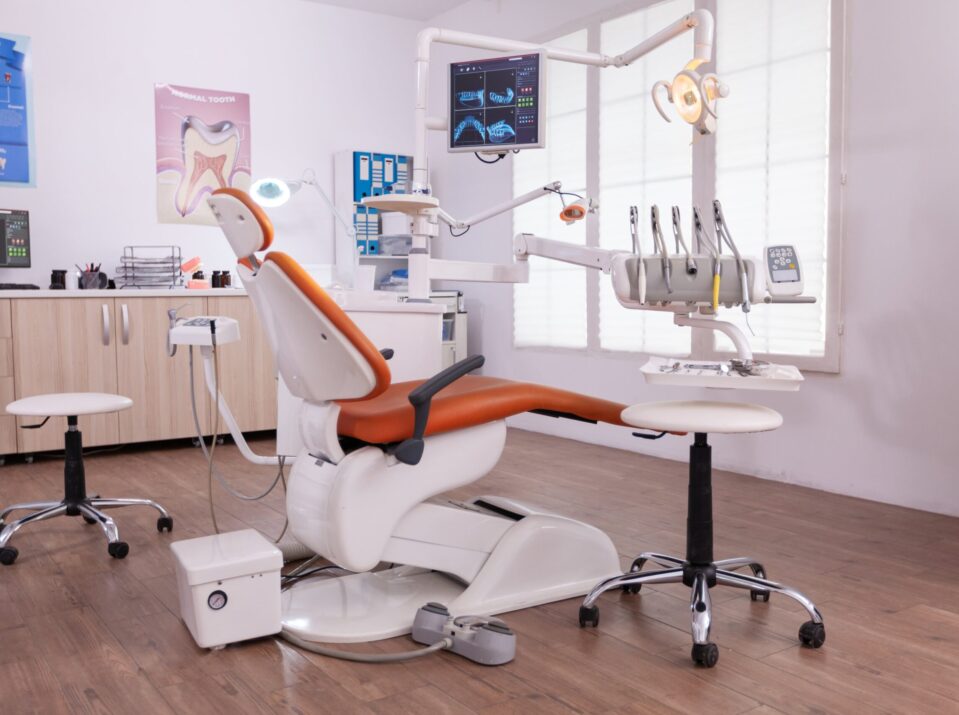
Source: Freepik
Final Considerations
When deciding between conventional braces and self-ligating braces, it is essential to consider individual needs, preferences, and orthodontic requirements.
Both types of braces have their advantages and potential drawbacks, and the best choice will depend on various factors, including:
- Complexity of the Case: Different complexity of cases need different attention and might benefit from different strengths of each braces type.
- Aesthetic Concerns: Patients who prioritize aesthetics may prefer self-ligating braces, especially the clear or ceramic options.
- Comfort: Self-ligating braces are generally considered more comfortable due to reduced friction and smoother bracket design.
- Cost: Budget considerations may influence the decision, with conventional braces typically being less expensive.
- Oral Hygiene: Patients who struggle with maintaining oral hygiene may benefit from the simpler maintenance of self-ligating braces.
- Frequency of Visits: Self-ligating braces may be more convenient for patients who prefer fewer orthodontic visits.
Refer to the table below for the summary of the differences between conventional braces and self-ligating braces to make an informed decision.
Conclusion
In conclusion, choosing between conventional braces and self-ligating braces depends on various factors including your specific orthodontic needs, budget, and personal preferences.
If you’re still unsure which type of braces is right for you, or want to learn more about our braces services in Penang, Skye Dental is here to help.
We offer affordable braces packages with low monthly installment plans to make your orthodontic journey as smooth and stress-free as possible.
Contact Skye Dental today to schedule your consultation and take the first step towards achieving the beautiful smile you deserve.
FAQ
What is conventional brace?
Conventional braces, also known as traditional braces, are the most common type of orthodontic appliance.
They consist of metal or ceramic brackets that are bonded to the front surface of each tooth. These brackets are connected by an archwire, which applies pressure to the teeth to move them into the desired position.
What are self-ligating braces?
Self-ligating braces are a newer type of orthodontic appliance that uses a specialized bracket system to hold the archwire in place without the need for elastic or metal ligatures.
These brackets have a built-in sliding door or clip that secures the archwire, reducing friction and pressure on the teeth during treatment.
What are the advantages and disadvantages of self-ligating braces?
Advantages of self-ligating braces:
- Reduced friction leads to faster tooth movement and potentially shorter treatment duration.
- Fewer appointments required for adjustments and ligature replacements, typically every 6 to 10 weeks.
- Often advocated for non-extraction cases as it uses arch expansion to create the necessary space for aligning teeth, eliminating the need for extractions.
- Improved comfort and hygiene, as there are no elastic ligatures to trap food particles or irritate the gums.
- Shorter treatment duration (a few months on average), but varies based on individual cases.
Disadvantages of self-ligating braces:
- Generally more expensive than conventional braces, ranging from RM4500 to RM9000.
- Potential for the bracket doors to become dislodged or break.
- May not be suitable for complex orthodontic cases that require more precise control over tooth movement.
Read this section to understand more about the pros and cons of self-ligating braces.
What are the advantages and disadvantages of conventional braces?
Advantages of conventional braces:
- Proven effectiveness in treating a wide range of orthodontic issues.
- Generally less expensive than self-ligating braces, ranging from RM3500 to RM6000.
- Reliable and predictable tooth movement with ligatures.
Disadvantages of conventional braces:
- More friction and pressure on the teeth, which can lead to slower tooth movement and potential discomfort.
- Require more frequent appointments (every 4 to 6 weeks) for ligature replacements and adjustments.
- Often require teeth extractions, particularly in cases where there is severe crowding, to create space for teeth alignment.
- Longer treatment duration (20 to 32 months on average, can be longer for complex cases).
- Potential for food particles and plaque to accumulate around the elastic ligatures, making oral hygiene more challenging.
Read this section to understand more about the pros and cons of conventional braces.
Which is better, self-ligating braces or traditional braces?
Both self-ligating braces and traditional braces can effectively straighten teeth and correct bite issues.
Hence, the choice between these two types of braces ultimately depends on individual factors, such as the complexity of the orthodontic case, personal preferences, and budget.
Read this section to understand more about the pros and cons of both types of braces.
